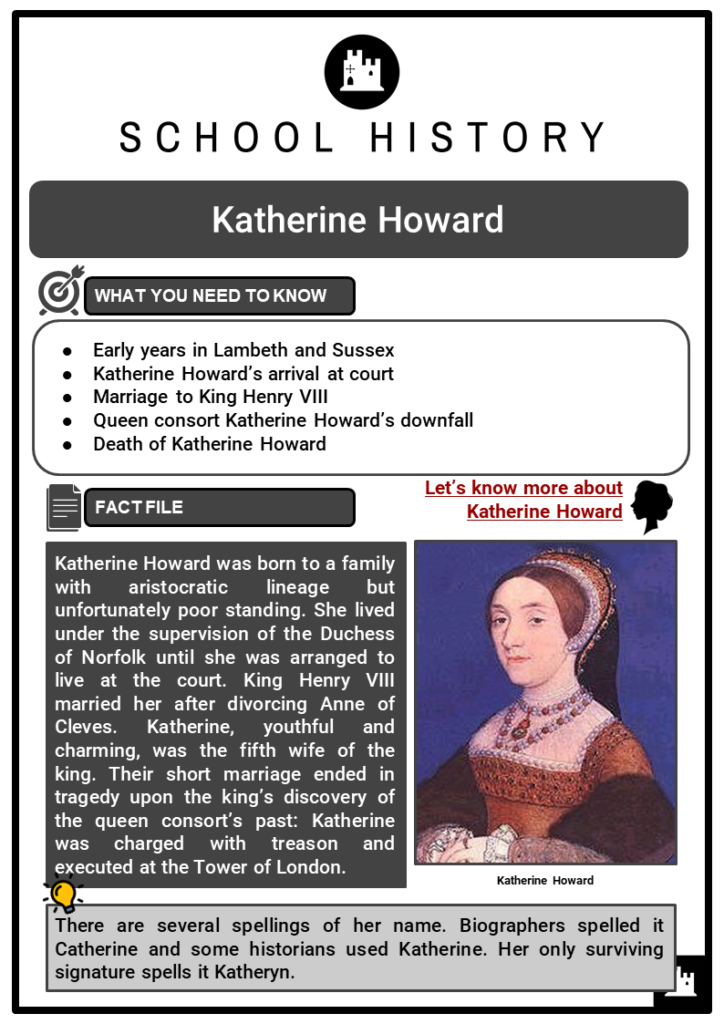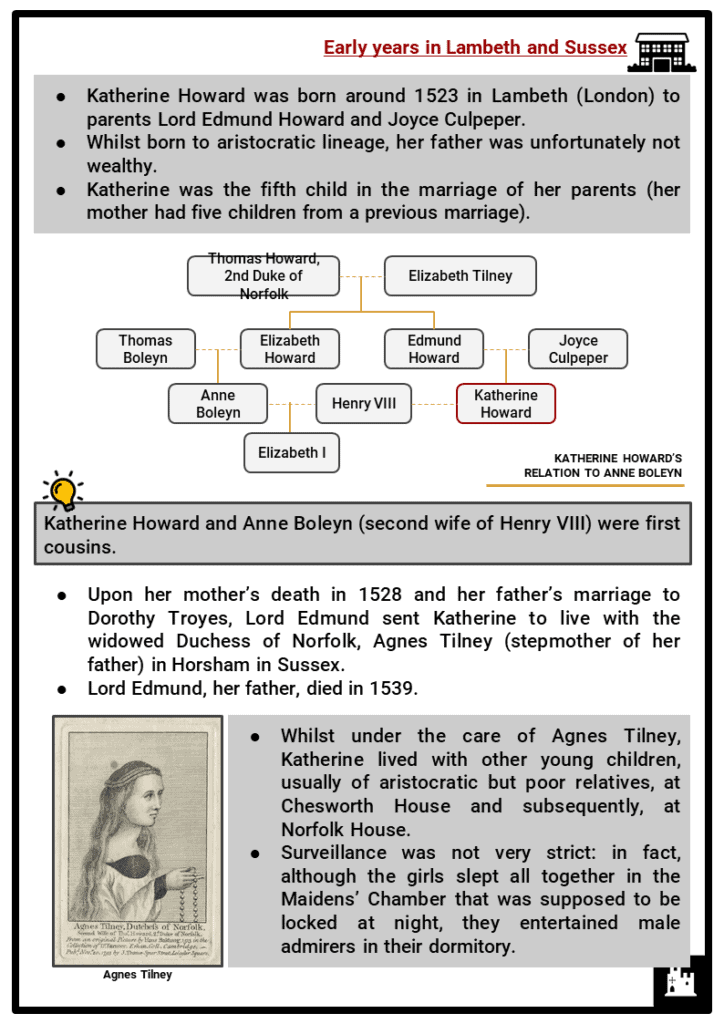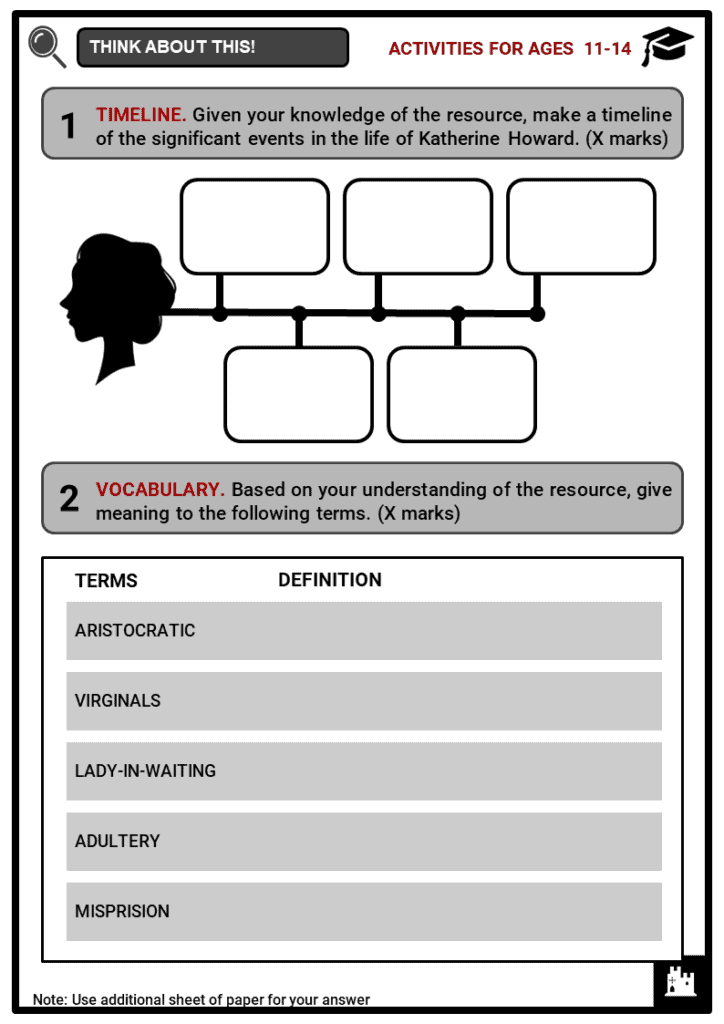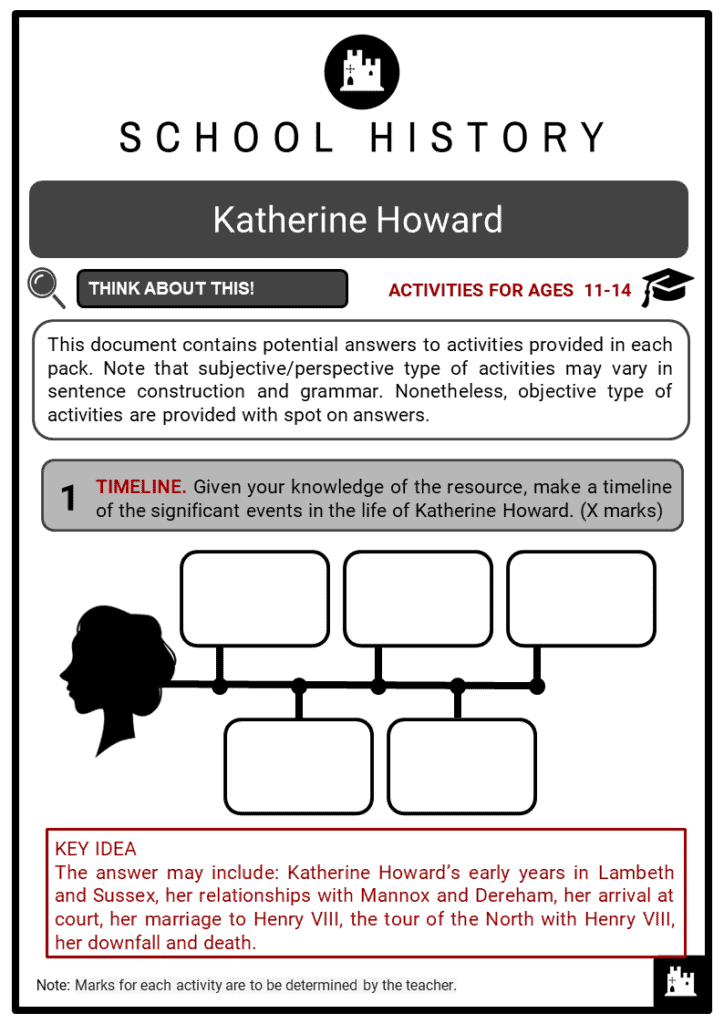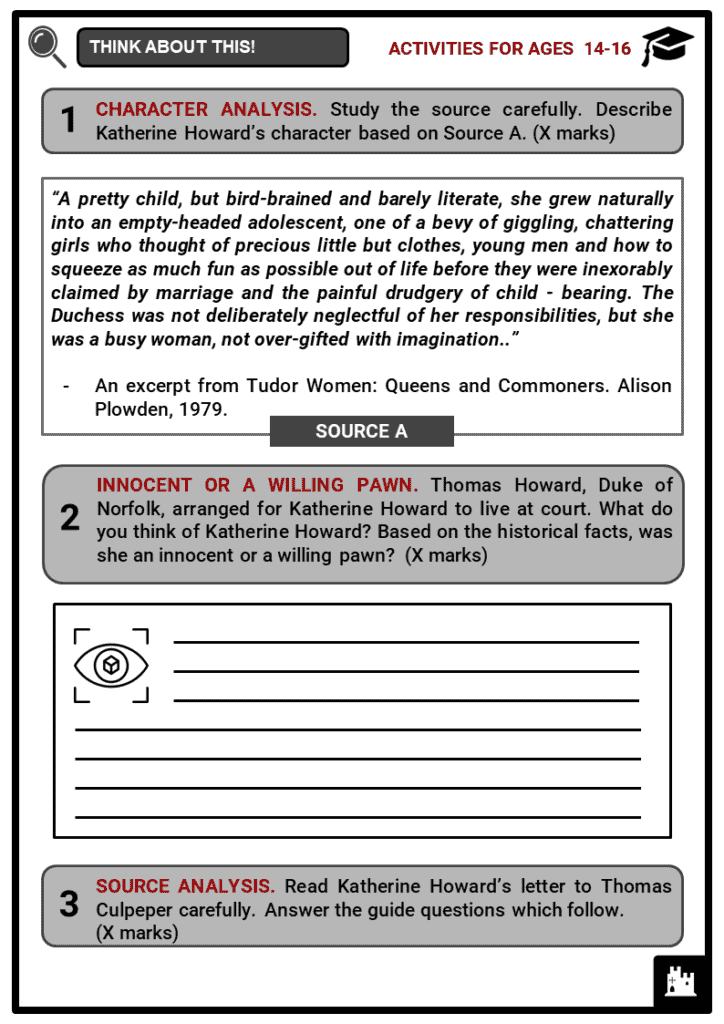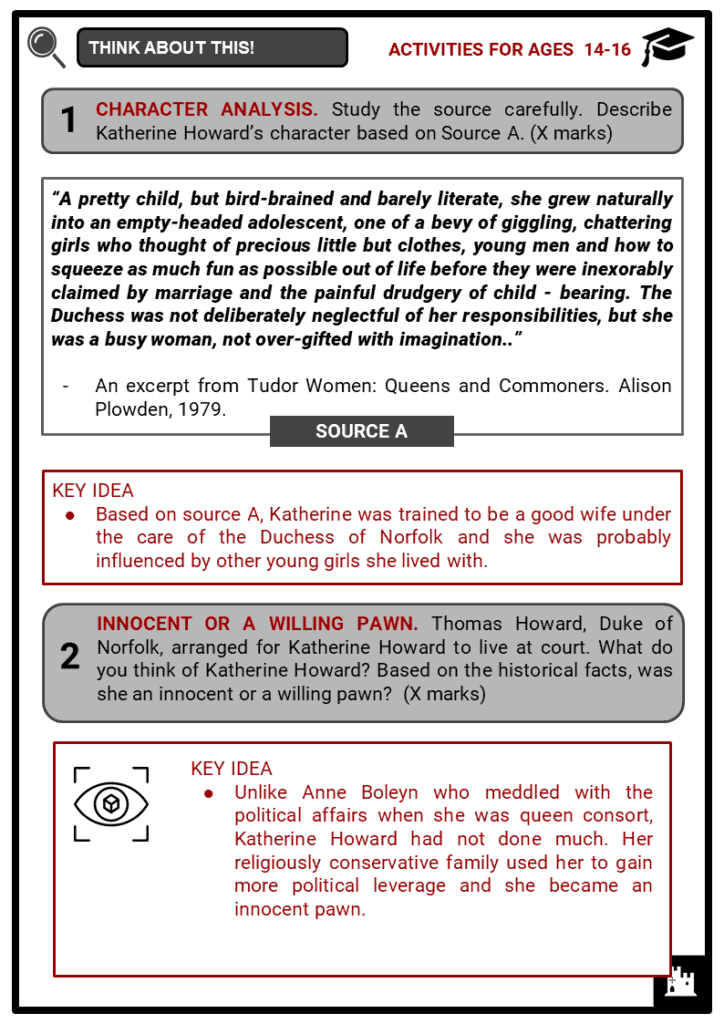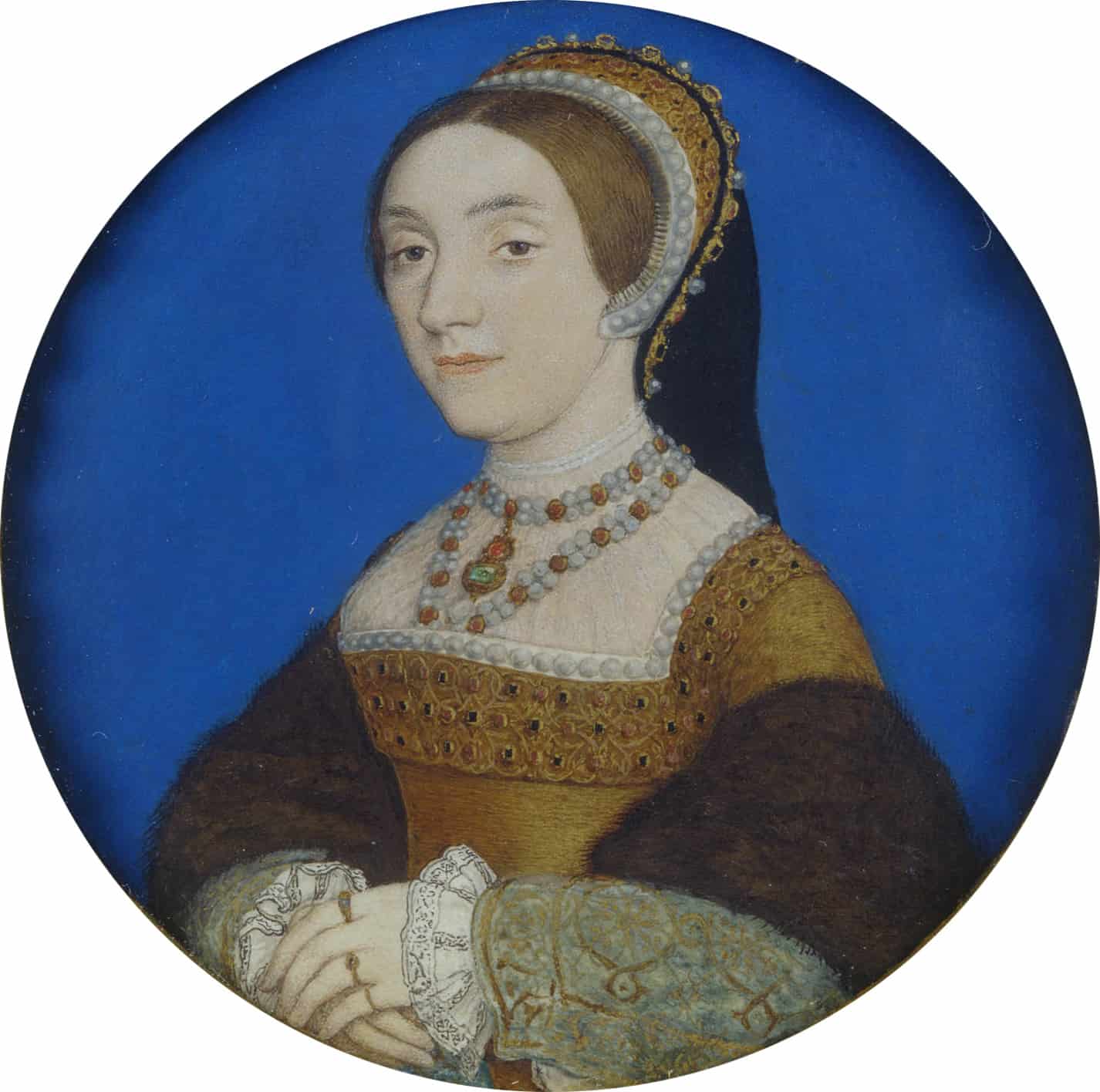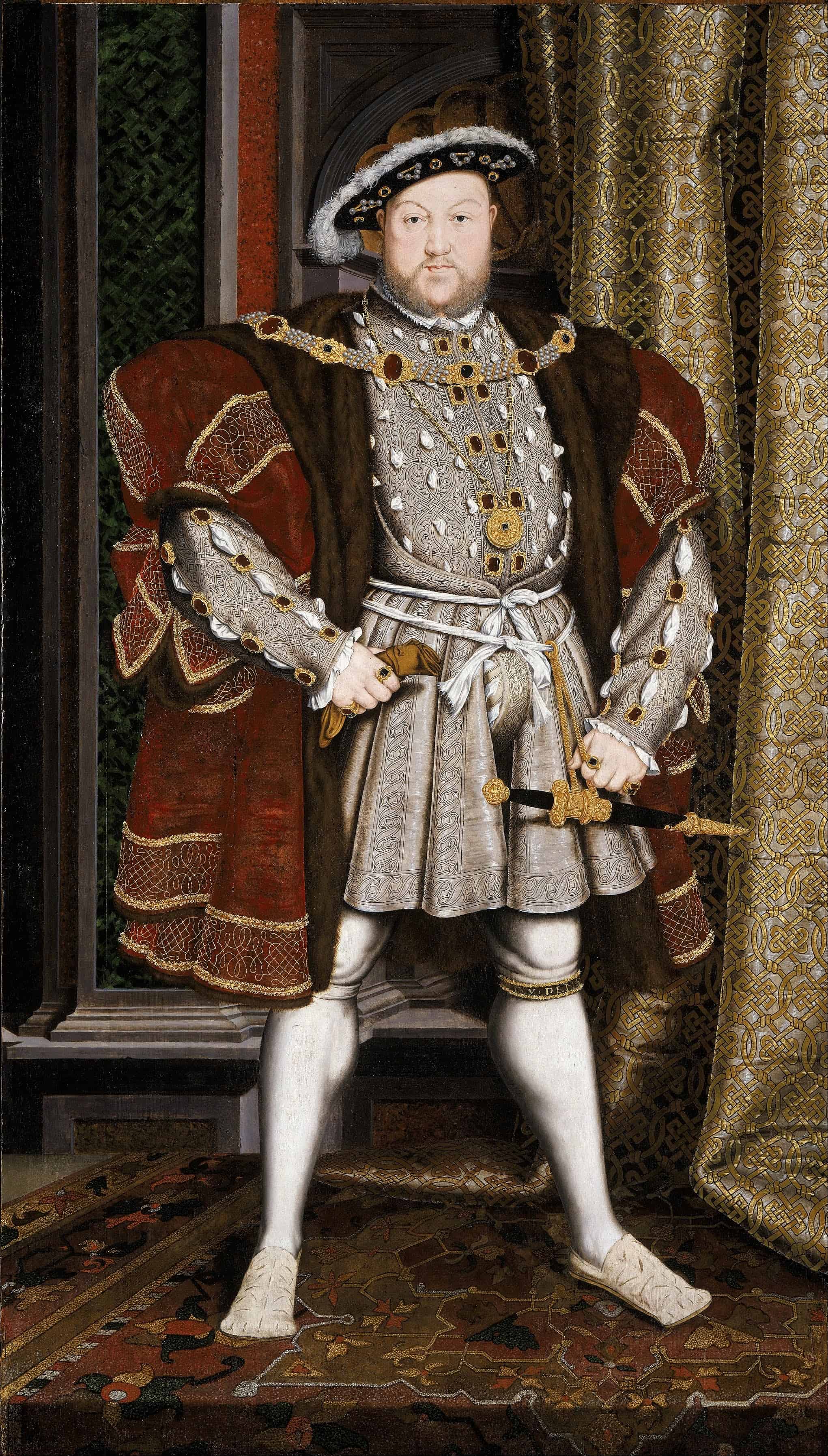Download Katherine Howard Worksheets
Do you want to save dozens of hours in time? Get your evenings and weekends back? Be able to teach Katherine Howard to your students?
Our worksheet bundle includes a fact file and printable worksheets and student activities. Perfect for both the classroom and homeschooling!
Table of Contents
Add a header to begin generating the table of contents
Summary
- Early years in Lambeth and Sussex
- Katherine Howard’s arrival at court
- Marriage to King Henry VIII
- Queen consort Katherine Howard’s downfall
- Death of Katherine Howard
Key Facts And Information
Let’s know more about Katherine Howard
- Katherine Howard was born to a family with aristocratic lineage but unfortunately poor standing. She lived under the supervision of the Duchess of Norfolk until she was arranged to live at the court. King Henry VIII married her after divorcing Anne of Cleves. Katherine, youthful and charming, was the fifth wife of the king. Their short marriage ended in tragedy upon the king’s discovery of the queen consort’s past: Katherine was charged with treason and executed at the Tower of London.
- There are several spellings of her name. Biographers spelled it Catherine and some historians used Katherine. Her only surviving signature spells it Katheryn.
Early years in Lambeth and Sussex
- Katherine Howard was born around 1523 in Lambeth (London) to parents Lord Edmund Howard and Joyce Culpeper.
- Whilst born to aristocratic lineage, her father was unfortunately not wealthy.
- Katherine was the fifth child in the marriage of her parents (her mother had five children from a previous marriage).
- Katherine Howard and Anne Boleyn (second wife of Henry VIII) were first cousins.
- Upon her mother’s death in 1528 and her father’s marriage to Dorothy Troyes, Lord Edmund sent Katherine to live with the widowed Duchess of Norfolk, Agnes Tilney (stepmother of her father) in Horsham in Sussex.
- Lord Edmund, her father, died in 1539.
- Whilst under the care of Agnes Tilney, Katherine lived with other young children, usually of aristocratic but poor relatives, at Chesworth House and subsequently, at Norfolk House.
- Surveillance was not very strict: in fact, although the girls slept all together in the Maidens’ Chamber that was supposed to be locked at night, they entertained male admirers in their dormitory.
- Henry Mannox, a music teacher assigned to the Duchess’ household, taught Katherine how to play the virginals, a keyboard instrument in 1536.
- Katherine had an inappropriate relationship with her music teacher, who was believed to be much older than her.
- The affair was short-lived and passed over.
- However, not much time passed until her attention was taken by Francis Dereham, a secretary in her grandmother’s household.
- The couple were much engaged by each other, to the point of calling each other husband and wife.
- They exchanged love tokens and kept their relationship to themselves: Dereham brought her wines, strawberries, apples and other things and Katherine was suspected of letting the young nobleman in at a later hour.
- When Agnes Tilney found out about this affair, she put an end to it.
- The couple broke off but it was speculated that they were planning to get married, upon Dereham’s return from Ireland.
- Unfortunately, Katherine’s affection was directed at Thomas Culpeper when Dereham came back.
Katherine Howard’s arrival at court
- Katherine’s uncle, Thomas Howard, Duke of Norfolk, arranged for his niece to live at the court of Henry VIII and become a lady-in-waiting for the king’s new wife, Anne of Cleves, who was to arrive from Germany in 1539.
- Although the king married Lady Anne in January 1540, his marriage ended after only a few months due to his dissatisfaction with his new wife’s appearance.
- In the meantime, his attention was caught by the youth and charm of Katherine Howard: the king started offering her gifts and courting her. Lady Anne even confessed to the ambassador of her homeland that she was slightly vexed by Henry’s attraction to Katherine.
- The assignment of Katherine to the court of the king had been seen as an opportunity for the Howards to gain influence to bring back Roman Catholicism in England.
- The Howard family was religiously conservative and did not fully support the Reformation.
Marriage to King Henry VIII
- The king’s marriage to Anne of Cleves (Henry VIII’s fourth wife), had been encouraged by Thomas Cromwell in order to strengthen Protestantism in England.
- When their marriage proved to be a complete failure, Cromwell was executed at the Tower of London on 28 July, 1540.
- On the same day of his execution, Henry VIII married Katherine Howard at Oatlands Palace and it was officiated by Bishop Bonner. Their marriage was made public on 8 August.
- Catherine adopted the motto, “Non autre volonté que la sienna” or "No other wish but his".
- Henry VIII was forty-nine years old when he married Katherine, who was only nineteen years old.
- No preparations were made for Katherine’s coronation since there were no signs of royal pregnancy.
- In fact, it is speculated that the king was impotent due to his obesity.
- It had been a custom to prepare for the coronation of the queen when she proved capable of producing heirs.
- In July 1541, the king brought Katherine with him to meet with James V of Scotland and to appease his northern subjects.
- During this tour of the North, Lady Jane Rochford (one of Katherine’s ladies of the privy chamber, and sister-in-law of the deceased Anne Boleyn), arranged a meeting between the queen consort and Thomas Culpeper, one of the king’s favourite courtiers.
- The queen had a relationship with Culpeper prior to her marriage to the king and it is speculated that it went on after the marriage.
- On 27 August 1541, Katherine appointed Francis Dereham as her secretary to prevent him from talking about their past affair but it proved to be a dangerous decision.
Queen consort Katherine Howard’s downfall
- A day after All Saint’s Day in the chapel of Hampton Court Palace, Archbishop Cranmer handed a letter to Henry VIII and requested him to read it privately.
- The contents of the letter would determine the fate of the queen consort.
- John Lassells informed Cranmer about Katherine’s affairs before the marriage.
- He was a brother of Mary Lassells, a former servant in the household of the Duchess of Norfolk.
- John asked his sister Mary to apply for the service with the queen; Mary did not like the idea and told of the affairs that Katherine had with Mannox and Dereham.
- Upon learning about this, Cranmer consulted with the Lord Chancellor and the Earl of Hertford who thought that the king should learn about it from him.
- Initially, the king did not believe the accusations but he commanded to investigate the informant, John Lassells and his sister, Mary.
- Mannox and Dereham were arrested.
- Only after a series of questioning and torture, Mannox and Dereham confessed their amorous liaisons with the queen.
- Mannox denied any sexual relations with her.
- The king was devastated by this discovery.
- Upon her arrival, Queen Katherine was interrogated by Archbishop Cranmer, Lord Chancellor Audley, the Duke of Norfolk, the Lord Chamberlain and the Bishop of Winchester.
- She denied the charges at first only to disclose these affairs but she maintained that she was raped and did not consent to marrying Dereham.
- On 11 November 1541, Cranmer arranged for the queen’s transfer to Syon Abbey. Over the following days, Cranmer, Paulet and Wriothesley went on to interrogate Katherine.
- On 23 November, Katherine was stripped of her title as queen.
- When the old Duchess of Norfolk learned about Katherine’s arrest, she sent the servant, Pewson, to gather more information at Hampton Court Palace. The Duchess had Dereham’s coffers in custody that might have contained evidence of the affair.
- When the coffers were investigated, the Duchess had already searched them, so she was suspected of destroying papers that would have compromised her.
- The Duchess and Pewson were arrested along with everyone who was suspected to have known about the queen’s misconduct, including Lord William Howard and his wife, the Countess of Bridgewater, Joan Bulmer, Catherine Tylney, Robert Davenport, and a number of others.
- Misprision is the deliberate concealment of one’s knowledge of a treasonable act.
- A letter from Katherine addressed to Culpeper was used as an evidence.
- This letter revealed Lady Rochford’s role in their relationship. She had been arranging their meetings.
- On 1 December 1541, Culpeper and Dereham were tried for high treason at Guildhall.
- On 10 December 1541, they were executed at Tyburn: Culpeper was beheaded and Dereham was hanged, drawn and quartered.
Death of Katherine Howard
- Katherine implored the king for mercy. In her third letter of confession (written on 7 November 1541), the queen wrote: I, your Grace's most sorrowful subject and most vile wretch in the world, not worthy to make any recommendation unto your most excellent Majesty, do only make my most humble submission and confession of my faults. And where no cause of mercy is given on my part, yet of your most accustomed mercy extended unto all other men undeserved, most humbly on my hands and knees do desire one particle thereof to be extended unto me, although of all other creatures I am most unworthy either to be called your wife or subject... My sorrow I can by no writing express, nevertheless I trust your most benign nature will have some respect unto my youth, my ignorance, my frailness, my humble confession of my faults, and plain declaration of the same, referring me wholly unto Your Grace’s pity and mercy… I most humbly beseech you to consider the subtle persuasions of young men and the ignorance and frailness of young women. I was so desirous to be taken unto your Grace’s favour, and so blinded by with the desire of worldly glory that I could not, nor had grace to consider how great a fault it was to conceal my former faults from your Majesty, considering that I intended ever during my life to be faithful and true unto your Majesty ever after.
- Katherine’s letter written in a regretful tone did little to convince the king of her innocence, and forgiveness was not granted to her.
- Heavy charges were imposed upon her: she was accused of unchastity before her marriage, the concealing of sexual relations before her marriage, and engaging in adulterous behaviours.
- On 7 February 1542, the parliament passed a bill of attainder.
- Failing to disclose the sexual history of the queen consort to the king within twenty days of marriage and inciting someone to commit adultery were made treason and punishable by death through the Royal Assent by Commission Act 1541.
- On 10 February, she was brought to the Tower of London.
- A bill of attainder is an act of a legislature declaring a person guilty of some crime, and punishing them, often without a trial.
- The day before being executed, Katherine asked if she could practise the laying of her head upon the block in order to do it properly.
- She was beheaded and buried in the nearby chapel of St. Peter ad Vincula on 13 February 1542.
- Lady Rochford followed the same fate thereafter on Tower Green.
Image sources:

